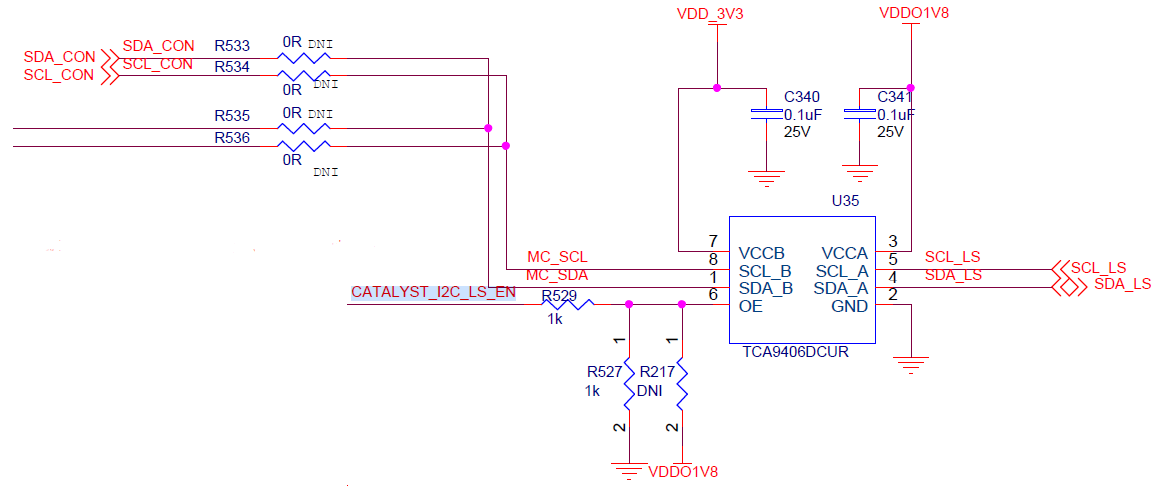Hi,
We are using TCA9406 to convert our I2C lines from 3.3v to 1.8v. Below is the schematic:
We have additional 10k pull ups on VCCB side on SCL and SDA. Here is the problem we are facing:
1) When we connect R217 with 10k and remove R529, R527, this is equivalent to connecting OE to VCCA. In this case the signals are always high, the master is unable to pull down the lines.
2) When we connect R529, R527 and disconnect R217 we are controlling OE pin with CATALYST_I2C_LS_EN signal which is driven from a 3.3v IO. In this configuration we are enabling OE 31ms after enabling VCCA and VCCB. In this case the same scenario as in case 1 is occuring. If we increase the delay before enabling the OE to 180 ms the circuit is working as expected. From the data sheet waiting for 200ns after enabling OE is enough for O.S to become stable.
This issue is only happening when we connect the slave on VCCA side. When slave is not connected there is no issue.
We have also observed that on a different board where SCL_A and SDA_A are externally pulled up by 4.7k resistor and OE tied to VCCA it is working without any issue. But the problematic board is not working with external pull ups also.
Why is giving this additional delay on enabling OE required?
We have some boards where OE is directly tied to VCCA where we don't have an option of controlling the OE. The same problem is present on these boards also.



